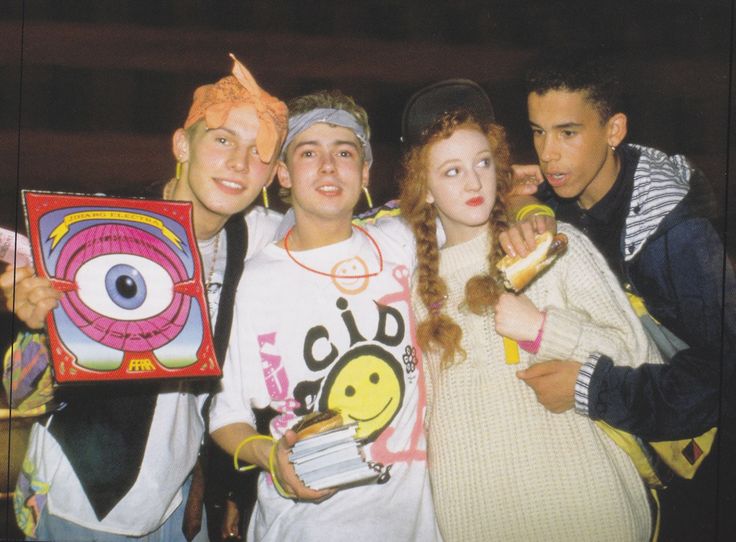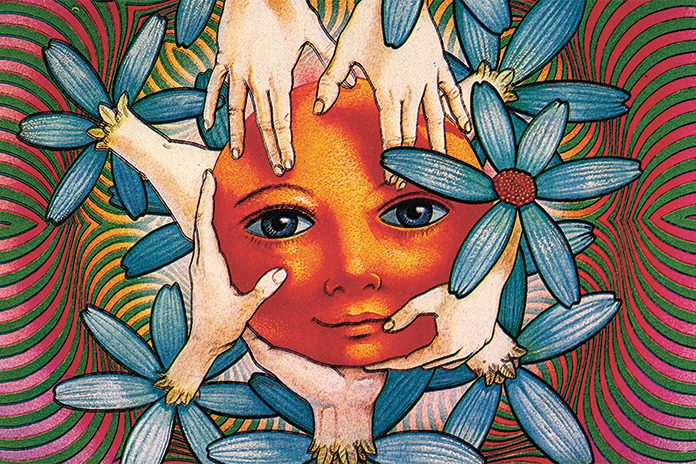Raves are an integral part of today;’s Dance Culture. But how did they come to be? What resulted in a need to “get down” on the dance floor and forget reality for one night? This articles explores the unique and crazy history of raves.
The term “rave” was first used to describe wild bohemian parties in the late 1950s, but it wasn’t until the 80s that the term gained lasting popularity. It still took a few years until the late 80s, when Acid House was born in Chicago, which marks the beginning of raves as we know them today. These raves started out as illegal warehouse parties full of attendees of enhanced states of mind influenced by drugs. Today, raves are much more common and much less often illegal.
In 1985 DJ Pierre (Nathan Jones) bought a Roland TB-303 bass synth at a second-hand shop and experimented with it until he accidentally got the squelchy bassline, which is such a characteristic sound of Acid House. From there on, the number of raves exploded, causing so much late-night ruckus that they attracted police. Laws in England particularly resulted in more and more illegal raves, which made it hard for promoters to organise events in Clubs.
This new sound began with a record produced by Phuture, a group founded by DJ Pierre, Earl “Spanky” Smith Jr., and Herbert “Herb J” Jackson. Newly turned on to the unique sounds of the TB-303, the trio released a demo of ‘Acid Tracks’.
Acid house hadn’t really made a big impact, until a group of four DJs (Paul Oakenfold, Danny Rampling, Nicky Holloway and Johnny Walker) took a trip to Ibiza to visit the acclaimed club Amnesia. This is where they heard resident DJs play the “balearic” style- a blend of multiple genres, including the Chicago Acid House. This inspired Danny to start a rave called Shoom in a gym. The sound system used was provided by Carl Cox, another DJ who went on to become a House legend. Ravers were obsessed with a then-new drug called ecstasy. This drug went on to become tightly related to the rave scene. One of the Shoom part tickets had a smiley face on it, which went on to become a trademark sign of the Acid House scene. The late 80s and early 90s was when the era of “dressing down, not dressing up” started. Club-goers were dressing increasingly tribalistic and laid-back.

Organized by production companies, raves began to gain press attention. A popular fanzine written by Paul Oakenfold called Boy’s Own was responsible for publishing the first article on acid house . Boy’s Own also held the first documented outdoor acid rave in 1988. Legend has it that the young Norman Cook – aka Fatboy Slim – was turned onto house music during one of their parties.
Sunrise and Revolution in Progress groups started making bigger parties. They brought raves out of the darkness of illegal warehouses into the light of big public events. Freedom to Party was a huge campaign in Trafalgar Square which influenced the loosening of UK’s licensing laws. Clubs and dance venues were finally allowed to stay open all night long.
The rise of use of drugs and psychedelics in parties gave them a lot of negative press. During the backlash, a UK acid house record managed to break into the mainstream. Produced by a mysterious artist called Humanoid, ‘Stakker Humanoid’ reached #17 on the UK charts in 1988.
During the early 90s, it became much harder to hold one-off events due to new bylaws. However, organizations such as Fantazia, Universe, N.A.S.A. (Nice and Safe Attitude), Raindance, Amnesia House, ESP, and Helter Skelter still managed to hold large-scale legal raves in warehouses and fields.
Genre styles started developing in the scene, and thus happy hardcore was born. In 1992 a bill was passed that allowed police to stop open air parties, or events organised by more than one promoter, as well as people on their way to raves. After 1993, most raves took place in licensed venues, including Helter Skelter, Life at Bowlers, the Edge, The Sanctuary, and Club Kinetic.
During this time, drum and bass emerged from a combination of techno, house and hardcore genres, originating in the UK. Records like The Prodigy’s ‘Jericho’, Rebel MC ‘The Wickedest Sound’ and A Guy Called Gerald ‘Anything’ helped to shape the sound of this genre.
After 1995, DnB got more and more often into house-oriented clubs, starting from the Ministry of Sound. However, the rave as it was back in the day was on a decline due to bad press. An organization called World Dance put on their “last” rave at Lydd Airport. “Here is your last chance before another chapter in ‘Rave History’ comes to an end!” the adverts posted around London proclaimed.
Meanwhile in the US during the 90s the timeline was as follows. A rave scene legend, DJ Scotto, made Manhattan’s first rave at Studio 54 (the Ritz back then). Frankie Bones started his famous Storm Raves in Brooklyn, with DJs Like Josh Wink and Sven Väth. Franky may have been the person behind PLUR
Frankie Bones would go on to start his own successful series of raves in Brooklyn, Storm Raves – where future international DJs like Josh Wink and Sven Väth got a chance to perform. Frankie also allegedly was the man behind the concept of PLUR, having once famously yelled on the microphone during a fight at a Storm Rave: “If you don’t start showing some peace, love, and unity, I’ll break your faces.”
Global Underworld Network was the most famous rave promotion crew. They are behind the OPIUM and NARNIA Festivals that were attended by an astounding 60.000 people. Narnia was featured on MTV and Life Magazine, as well as winning event of the year in 1995. It was dubbed the “Woodstock of Generation X”.
In the 80s and 90s raves were extremely popular in the Bay Area. There was no curfew and soon enough venues had up to 20.000 visitors every weekend. ‘Homebase’, and ’85 & Baldwin’ were two of the biggest venues that raves were held in the Bay Area. California also became notorious for raves.
After a few tragic incidents, the scene was brought to an end- watch this Fox News report from 1998. Even though illegal drugs were part of the scene, most people were there for more than just non-stop partying. It was an experience in its own: seeing your favourite DJs live, as well as MCs from abroad.
The rave scene influenced the emergence of electronic music and made it more mainstream. Even though the golden rave era was back in the 80s and 90s, we still carried over most of its principles into the new age. It is not the same, but all the core principles are still. there. People will always gather in unity to let go of worries and dance together like the unhinged animals we are.
Resources:
Helen Evans. “OUT OF SIGHT, OUT OF MIND: An Analysis of Rave culture”. Retrieved 25 October 2007.
Phil Cheeseman-fu. “The History of House”. DJ Magazine. Retrieved 13 August 2013.
